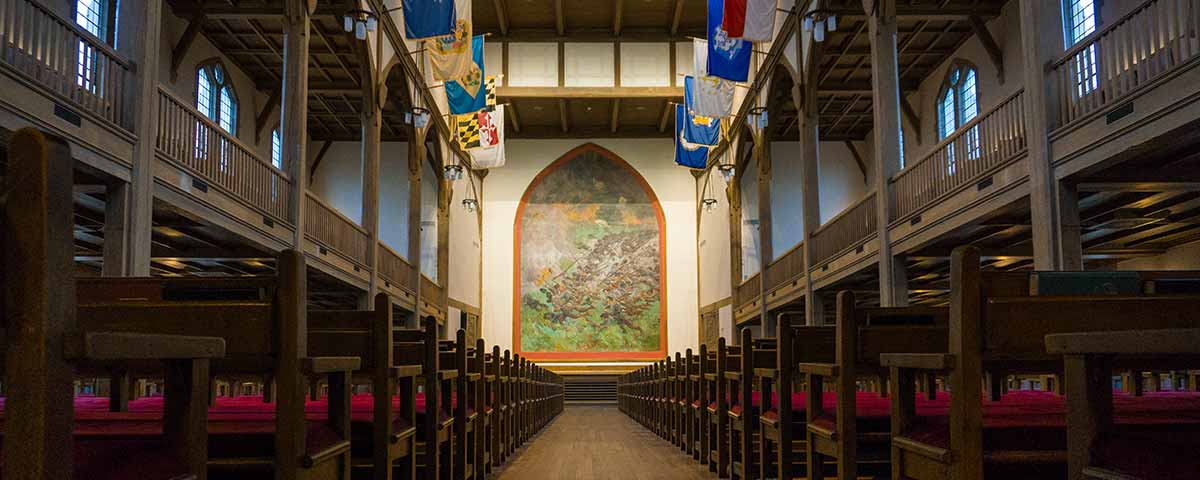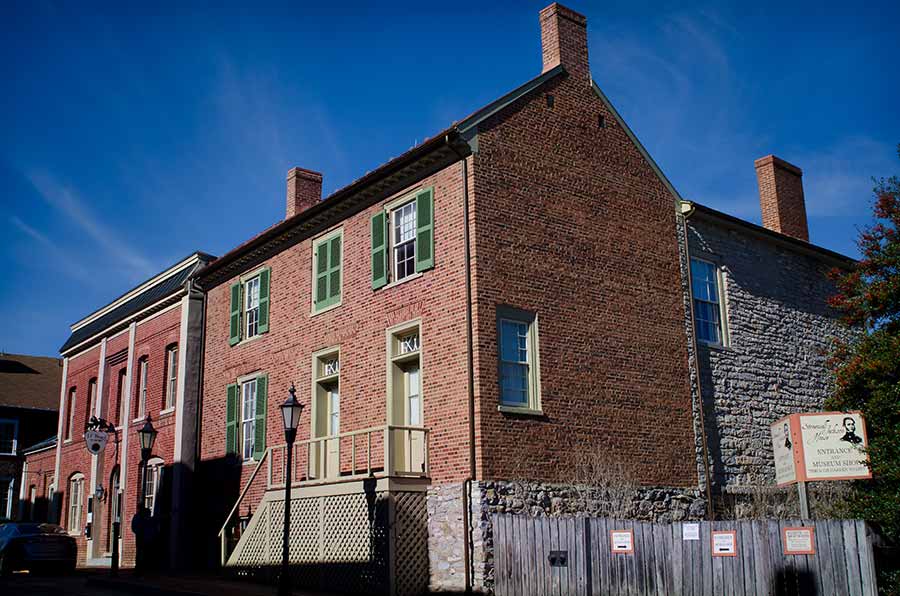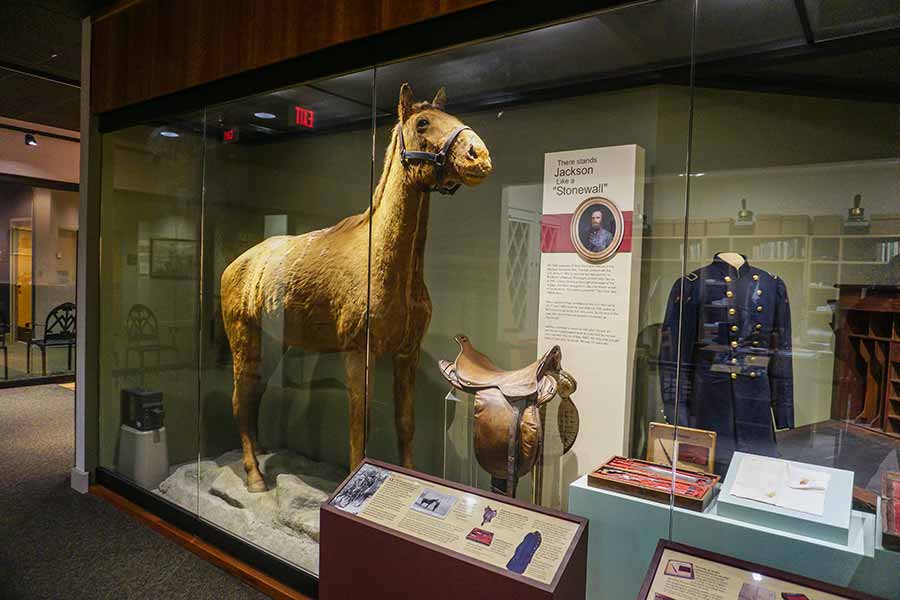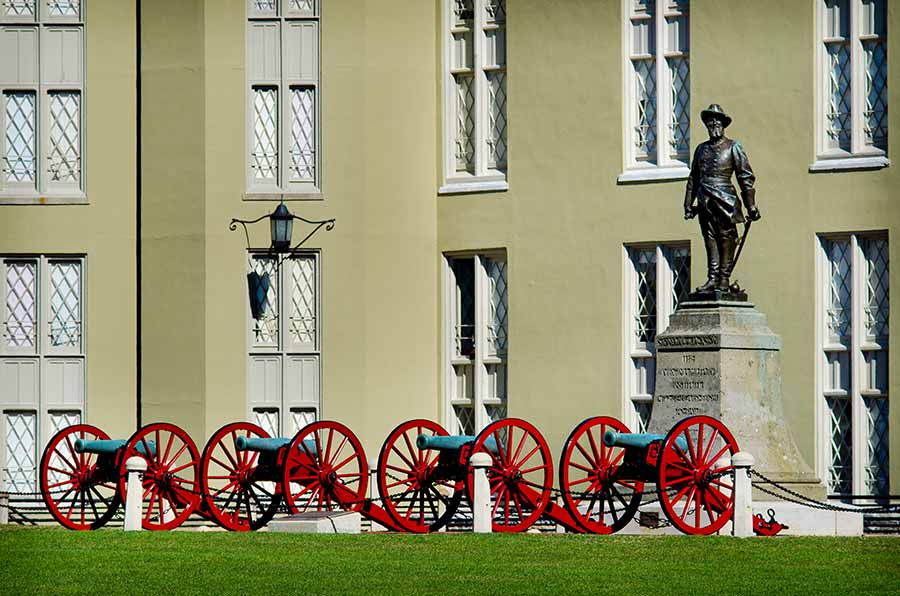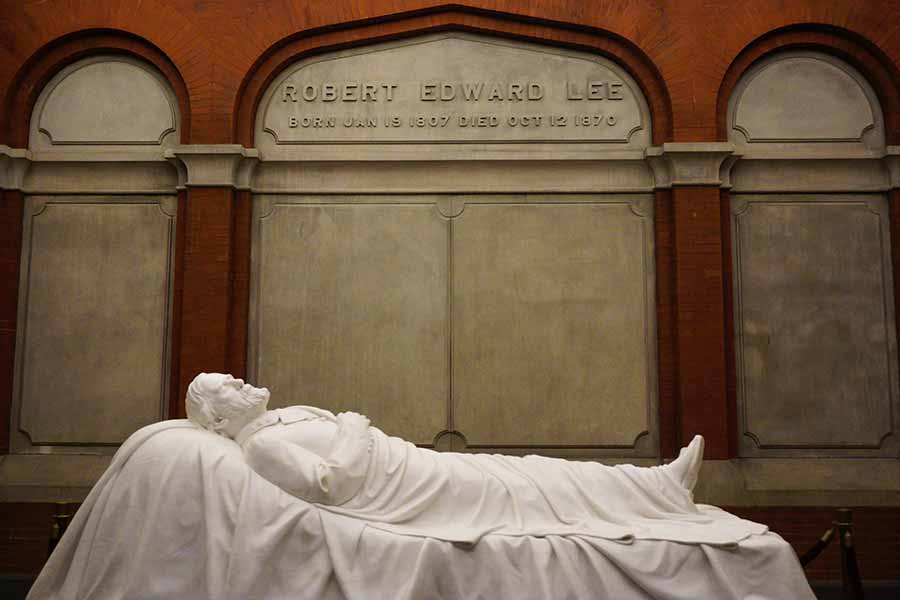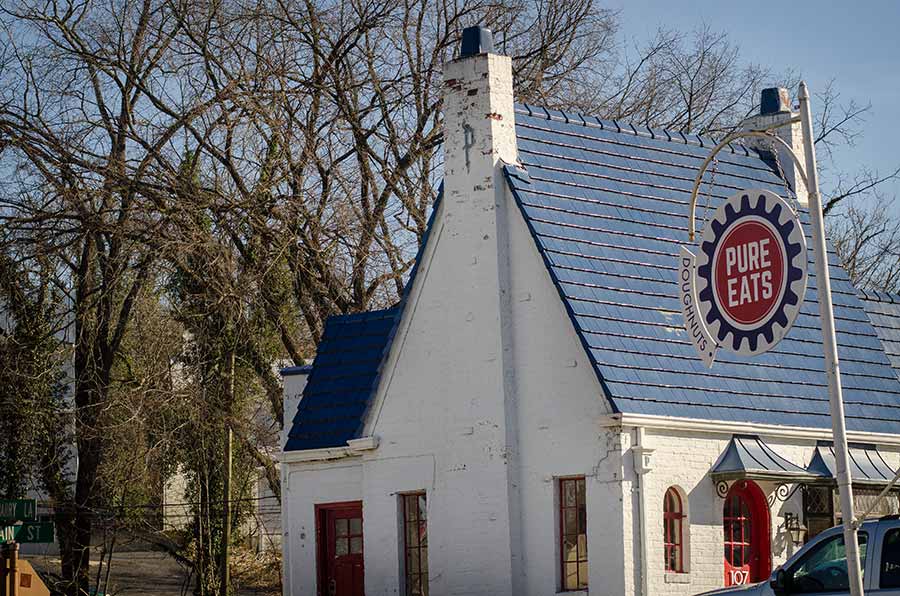The Virginia Military Institute feels like a place untouched by time, and yet the town it is in, Lexington, Va., finds itself responding to 21st-century concerns about history and heritage. Nestled in the Shenandoah Valley, Lexington is associated with two of the war’s best-known figures—Robert E. Lee and Thomas J. “Stonewall” Jackson. The latter had been an unpopular professor at VMI before the war, but once he made a name for himself, in every sense, on the battlefield, his association with VMI would be forever burnished. Lee, Jackson’s longtime comrade in arms, assumed the presidency of Washington College, adjacent to VMI, in August 1865, serving until his death in 1870. University officials moved quickly to change the school’s name to Washington and Lee University in his honor, and it is the site of Lee’s final resting place. Despite those associations, the most poignant reason to visit Lexington might be to read the names of relative unknowns. In May 1864, 257 young cadets, one only 15 years of age, marched 80 miles to fight in the Battle of New Market, where 10 would lose their lives. The VMI statue called Virginia Mourning Her Dead remembers the cadets and marks the gravesite of six of them. Located just off Interstate 81, Lexington is about an hour southwest of Charlottesville and an hour north of Roanoke. After you’ve toured the walkable town, consider heading north to visit the New Market Battlefield, whose famous annual reenactment takes place near the May anniversary of the fight. –Kim O’Connell
Home and Hearth
The downtown Stonewall Jackson House preserves the only home that the general ever owned. Now operated as a museum, the house has been restored to its prewar appearance and contains several Jackson artifacts. Historical markers in the outside garden provide additional context.
Legacy of War
Begin your tour at VMI. You’ll immediately notice the dramatic sweep of the parade grounds and the fortress-like barracks building behind it. VMI’s crenellated Gothic architecture owes much to its influential original architect, Alexander Jackson Davis, whose pale olive stucco-covered buildings were copied by subsequent architects as the campus expanded. Your first stop should be the VMI Museum located in the Jackson Memorial Hall. The museum and gift shop are on the lower two floors of this building.
Here, you can begin a cadet-led tour of the campus that allows you to learn the history of several school buildings and statues, such as the modest two-story structure that served as a field hospital during the Civil War, and get a firsthand account of such longstanding traditions as the “Rat Line”—the rigorous routine expected of the freshman class.
Horse Preserv(ed)
Stonewall Jackson’s mount Little Sorrel was not particularly handsome, but he was hardworking and withstood Jackson’s long marches. After the war, Anna Jackson donated the gelding to VMI, where he could often be seen grazing. Little Sorrel has been preserved and is on display at the VMI Museum, along with other Jackson artifacts, an impressive collection of firearms, and other college and military mementos. A small gravestone on the parade grounds marks the site of Little Sorrel’s cremated remains.
Cadets at War
In addition to fighting at the 1864 Battle of New Market, cadets helped train recruits in Richmond in 1861 and formed as reserves during the 1862 Shenandoah Valley Campaign. They helped resist some 1863 Union cavalry raids, and following New Market, the cadets helped bolster Richmond’s defenses. They then rushed to Lexington to defend against Hunter’s Raid. In 1865, they returned to Richmond’s defenses.
Commandant Of Cadets
Colonel Scott Shipp
Strength
257 Cadets marched to New Market
Wartime Casualties
Killed: 5
Mortally wounded: 5
(All above at New Market)
Wounded/died of disease: 50
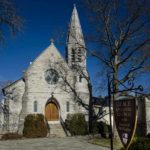
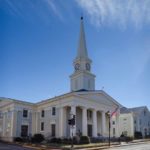
Church Lessons
The Jackson home is not far from the Lexington Presbyterian Church, a circa-1845 building in the Greek Revival style whose spire dominates Main Street. Jackson was an active parishioner here and taught Sunday school to enslaved people and free blacks. This fact has fueled debate over the paradox of Jackson’s devotion to literacy and religiosity among the enslaved, but not to ending their enslavement. The parish is still active and open to visitors.
The Grace Episcopal Church, in whose original antebellum building Lee served as a senior warden, can still be seen, too, in the southeast corner of the campus. For years, the church (now housed in a building that dates to the 1880s) was named R.E. Lee Memorial Episcopal Church, but in 2017, the congregation voted to revert back to its historical name, the name Lee would have known it by.
Wandering George
Union troops confiscated George Washington’s VMI statue in June 1864 during Hunter’s Raid, a four-day engagement in which Union General David Hunter ordered that VMI be burned, causing great damage to the original barracks. The Washington statue was returned and rededicated in 1866.
There Teaches Jackson…
Jackson spent 10 years teaching at VMI. He met and married his first wife, Elinor Junkin, there, who died in childbirth along with a stillborn son in 1854. He subsequently married Mary Anna Morrison in 1857 and brought her home to Lexington.
Lee the Educator
Lee struggled with the postwar offer of the presidency of Washington College, worried that it might “draw upon the College a feeling of hostility.” After accepting the position, Lee updated the school’s curriculum to include new courses in science, business, and journalism.
Lee Chapel and Museum
This building at Washington and Lee is famous for its “Recumbent Lee” statue by sculptor Edward Valentine. Below the chapel lies the Lee family crypt, where the general, his wife Mary, and several members of their family are entombed. The museum contains Lee artifacts and exhibits, but a highlight is the historic orrery (a mechanical planetarium) that Lee had commissioned to promote the study of astronomy. The general’s office sits not far away, restored to its appearance as he left it in fall 1870.
Resting Places
On the edge of town sits Stonewall Jackson Memorial Cemetery, where the commander was laid to rest after his fatal wound at Chancellorsville. Another statue of him, also by Valentine, commands the cemetery, and old, gray headstones add an eerie appearance. Others buried here include two Virginia governors and nearly 300 Confederate veterans. Make sure to seek out the tall round bush near Jackson’s statue, which caretakers have hollowed out to create a little cove for contemplation.
Local Color
The menu at Pure Eats packs a Southern punch. In this casual burger joint located only steps from Washington and Lee University, you can choose from a locally sourced beef burger, chicken sandwich, or veggie burger, along with other wraps and salads, and a nice selection of beer and cider. Delicious fried pickles are the extra-napkins star attraction. Doughnuts are made in house every morning, as well.

